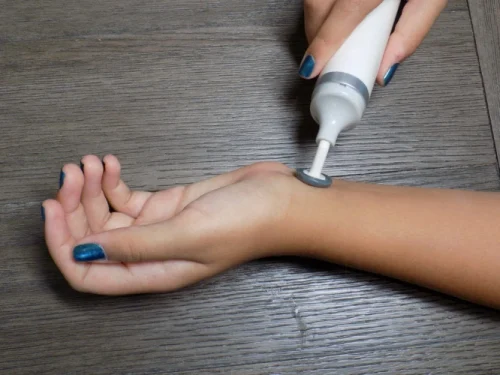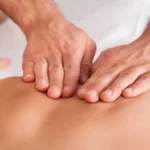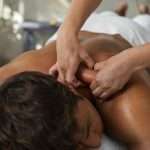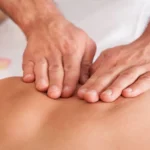Scar tissue is a natural part of the body’s healing process, but it can cause discomfort, pain, and even limit movement. If you are dealing with scar tissue, you may want to consider massaging it to break it down. This article will provide a step-by-step guide on how to massage scar tissue to break it down so you can enjoy improved mobility and comfort.
What is Scar Tissue?
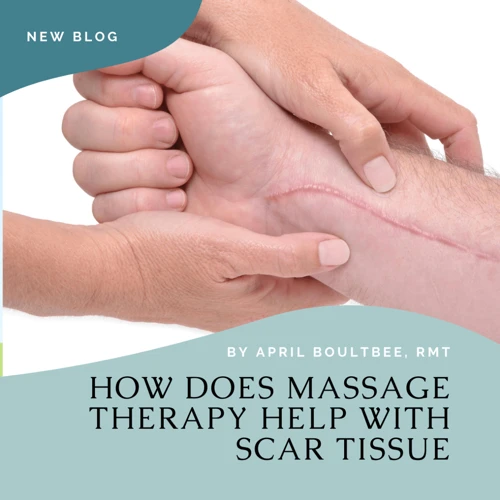
Scar tissue is a type of fibrous connective tissue that is formed in place of normal tissue after injury or trauma. It is made up of collagen, elastin, and other proteins, which are different from normal tissue. This tissue is denser and tougher than the normal surrounding tissues and can impair the functioning of the affected area. Scar tissue can also cause pain, inflammation, and restricted movement.
Massage therapy can effectively break down scar tissue, reduce pain and inflammation, and improve range of motion. By applying pressure to the affected area, massage can help to break up the scar tissue and encourage new tissue to form. This can improve circulation, reduce inflammation, and improve the overall health of the area.
Benefits of Massaging Scar Tissue
Massaging scar tissue can help to break it down and reduce its appearance. It can also help to reduce pain and discomfort associated with the scar, and increase mobility in the affected area. When massaging scar tissue, it is important to be gentle and not to use too much pressure.
Scar tissue massage can help to reduce the appearance of the scar by helping to break down the thickened, fibrous collagen that makes up the scar. It can also help to reduce the discolouration of the skin around the scar.
Massaging scar tissue can also help to improve the mobility of the area. By gently manipulating the scar tissue, it can help to make the area more flexible and reduce the risk of it becoming stiff and rigid.
Scar tissue massage can also help to reduce the pain and discomfort associated with the scar. By improving circulation and reducing inflammation, it can help to reduce the sensitivity of the affected area.
When is it too late to massage scar tissue? Generally speaking, it is best to start massaging a scar as soon as it has healed, as this is when it is most likely to respond to treatment. However, if the scar has been present for some time, it is still possible to break down the scar tissue and improve its appearance.
When is it Too Late to Massage Scar Tissue?

The amount of time it takes to massage scar tissue depends on the age and size of the scar.
- Massaging a scar that is less than six months old can help break down the scar tissue and prevent it from forming a large, raised scar.
- A scar that is more than six months old can still benefit from massage, but it may not be as effective in reducing the size or appearance of the scar.
- For large scars, massage can be used to help reduce the tension in the scar tissue and make it more flexible, but it may not be able to completely remove the scar.
- For older scars, massage can help improve the texture and flexibility of the scar tissue, but it may not be able to completely remove the scar.
- Massage should be done for at least 10 minutes a day for several weeks to achieve the best results.
Ultimately, it is best to consult with a healthcare professional to determine the best course of action for massaging scar tissue. They will be able to advise on the best massage techniques to use, as well as how long to massage scar tissue for optimal results.
How Long to Massage Scar Tissue?
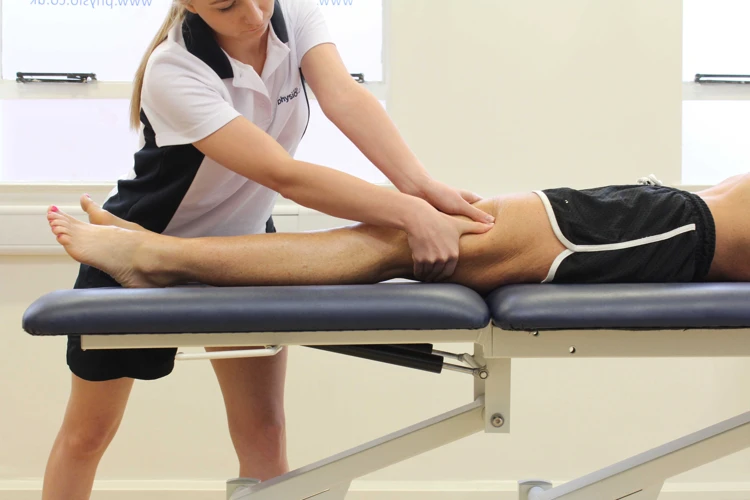
Scar tissue massage should be done gently, but persistently. It is recommended to massage the scar tissue for 10 to 15 minutes, 2-3 times a day. Massage should be done in a circular motion, using light to moderate pressure. It is important to be aware of how the scar feels during massage, as it should not become painful or cause discomfort.
If the scar tissue is being massaged after surgery, it is best to allow some time for the wound to heal and the swelling to reduce before beginning. Massaging too early can cause more damage to the area, as well as increase the risk of infection. If the scar tissue is more than two weeks old, massage can begin in the direction of the scar fibers.
Scar tissue massage can be done on its own, or in combination with other treatments such as ultrasound and electrical stimulation. These additional treatments can help to reduce pain, and improve the overall appearance of the scar. It is important to discuss with your doctor or therapist what is best for your individual case.
In general, scar tissue massage should be done for several weeks or longer in order to see the desired results. After the scar tissue has been broken down, further massage may not be necessary. However, it is important to continue to use topical creams, such as vitamin E or cocoa butter, to keep the area moisturized, and to reduce the visibility of the scar.
Preparing for a Massage
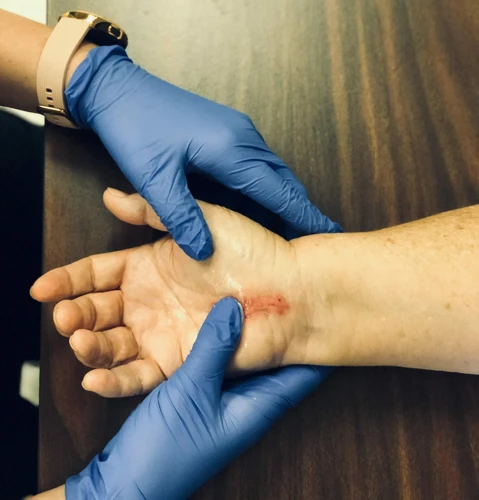
1. Choose an appropriate massage oil: Selecting a massage oil that is specifically formulated for scar tissue is important. Look for an oil that contains natural ingredients such as shea butter, almond oil, vitamin E, and other plant-based oils. This will help to soften the scar tissue and make it easier to massage.
2. Gently warm the massage oil: Before starting the massage, warm the oil slightly to make it easier to apply. You can do this by placing the oil in a container and submerging it in warm water.
3. Begin with light pressure: Start by using light pressure and gentle, circular movements. This will help to stimulate the scar tissue, increase blood flow, and reduce stiffness.
4. Massage the scar tissue in the direction of the muscle fibers: As you massage the scar tissue, make sure to move in the direction of the muscle fibers. This will help to break down the scar tissue and promote healing.
5. Increase the pressure as you go: Gradually increase the pressure as you massage the scar tissue. This will help to break up the fibers and reduce the appearance of the scar.
6. Use a massage roller for deeper massage: A massage roller can be used to apply deeper pressure to the scar tissue. Roll the roller over the affected area to break up the scar tissue and reduce adhesions.
7. Massage the scar tissue for a few minutes: Massage the scar tissue for a few minutes at a time. This will help to reduce the appearance of the scar and make it less noticeable.
8. Repeat the massage process once or twice a week: After a hip replacement, you should massage the scar tissue once or twice a week. This will help to keep the scar tissue supple and reduce any pain or discomfort.
Steps for Massaging Scar Tissue
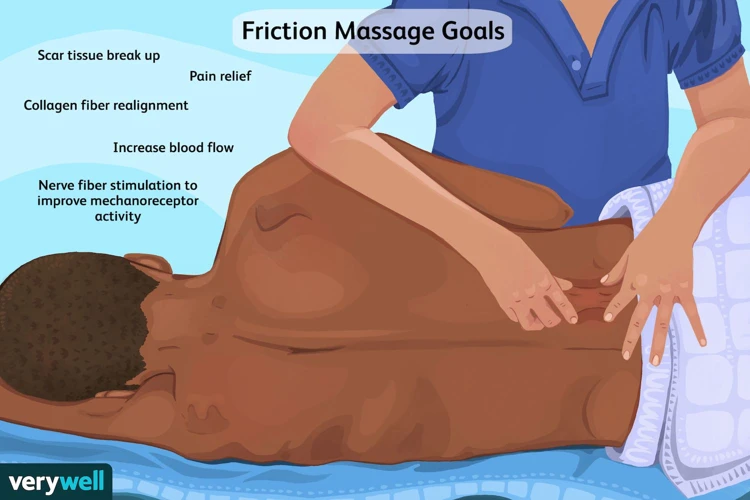
Step 1: Warm Up
Before beginning massage, warm up the area by applying a warm compress or heating pad to the area for 10 minutes.
Step 2: Applying Oil or Lotion
After warming up, it is important to lubricate the area of scar tissue. Use a light oil, lotion or cream to ensure the massage is comfortable and effective.
Step 3: Massage the Scar Tissue
Using your thumbs and fingers, gently massage the scar tissue in a circular motion. Move the skin around the scar tissue in all directions.
Step 4: Use Pressure to Break Down Scar Tissue
Once the massage has been completed, apply firm pressure to the scar tissue and gently move the skin in all directions.
Step 5: Increase Pressure Gradually
Continue to apply firm pressure and increase the pressure gradually. This will help to break down the scar tissue and improve the appearance of the scar.
Step 6: Cool Down
When finished, cool down the area with a cold compress or ice pack for 10 minutes. This will help reduce inflammation and discomfort.
How to Massage Scar Tissue After Surgery
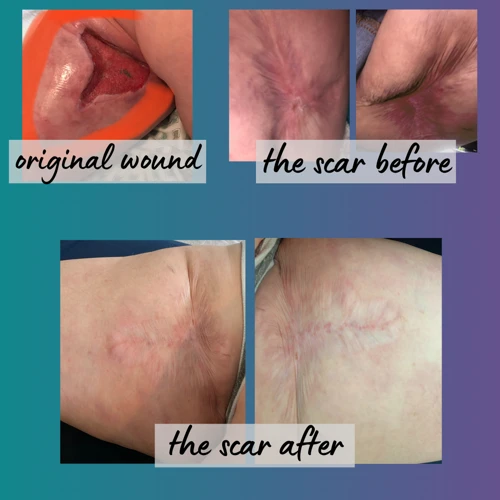
| Step | Instructions |
|---|---|
| 1. | Clean the area around the scar with lukewarm water and soap. Pat the area dry with a clean cloth. |
| 2. | Apply a lubricant, such as vitamin E oil, coconut oil, or baby oil, to the scar and surrounding skin. |
| 3. | Start massaging the scar in a circular motion. Move your hands in both directions and apply moderate pressure. |
| 4. | Gently stretch the scar tissue with your fingers as you massage it. |
| 5. | Continue massaging the scar for 10 to 15 minutes. |
| 6. | After massaging the scar, wash the area with lukewarm water and soap again. |
Massaging scar tissue after surgery can help reduce its appearance and make it less visible. It can also help break down the scar tissue and make it softer and more flexible. To massage scar tissue after surgery, start by cleaning the area around the scar with lukewarm water and soap. Then, apply a lubricant, such as vitamin E oil, coconut oil, or baby oil, to the scar and surrounding skin. Next, start massaging the scar in a circular motion, moving your hands in both directions and applying moderate pressure. Gently stretch the scar tissue with your fingers as you massage it. Continue massaging the scar for 10 to 15 minutes, and then wash the area with lukewarm water and soap again.
How to Massage Scar Tissue After a Hip Replacement
Scar tissue can form after a hip replacement, and massaging the area can help break it down. There are certain steps you should take to properly massage the scar tissue.
1. Start with Light Pressure
Begin your massage with light pressure. Use your fingertips or the flat part of your hand to gently massage the scar tissue. This can help to improve blood circulation to the area, which can help reduce pain.
2. Use Circular Massage Movements
When massaging the scar tissue, use circular massage movements. This will help to break down the scar tissue and promote healing.
3. Increase the Pressure Gradually
Once you have begun massaging the scar tissue with light pressure, you can gradually increase the pressure. However, be sure to pay attention to how your body responds to the pressure and make sure that you do not cause any pain.
4. Use Warm Compresses
In addition to massaging the scar tissue, you can also use warm compresses to help break down the scar tissue and promote healing. Soak a washcloth in warm water and apply it to the area for 10 to 15 minutes at a time.
5. Avoid Aggressive Massage
It is important to avoid aggressive massage techniques when working with scar tissue. This can cause further damage to the area and can even lead to more scarring.
Conclusion
Massaging scar tissue can help to break it down and promote healing. When massaging scar tissue after a hip replacement, be sure to start with light pressure and use circular massage movements. Increase the pressure gradually, use warm compresses, and avoid aggressive massage techniques.
Frequently Asked Questions
What type of massage is recommended for breaking down scar tissue?
Deep tissue massage is the best type of massage for breaking down scar tissue. This technique utilizes strategic pressure and slow strokes to reach the underlying layers of muscle and connective tissue. The massage therapist will apply pressure to the affected area, then slowly move their hands in a circular motion, then apply more pressure. This technique is designed to reduce tension, improve circulation, and increase flexibility in and around the scar tissue. The massage therapist may also use trigger point therapy to target specific areas and break up the scar tissue.
How Often Should I Massage Scar Tissue for Best Results?
It is recommended to massage scar tissue three times a week for best results. Massage should be gentle and slow at first, gradually increasing the pressure and frequency over time. Make sure to use a light oil or lotion to reduce friction. If the area is too tender to massage, you can use a kneading or compression technique instead. After each massage session, apply a cold compress to help reduce inflammation and swelling.
Are there any precautions I should take when massaging scar tissue?
Yes, there are certain precautions you should take while massaging scar tissue:
- Always use a gentle, circular motion when massaging scars. Avoid any vigorous pressure, as this can cause further damage.
- Always use a light oil, like jojoba or sweet almond, as this will help your fingers glide over the skin and reduce friction.
- It is best to massage scar tissue when it is still healing, as this will help promote the healing process and reduce the risk of further damage.
- Be cautious when massaging near wounds or open cuts, as this can increase the risk of infection.
- Never massage over broken skin, as this could cause further injury.
- If you experience any pain or discomfort while massaging your scar, stop immediately.
What are the Potential Risks of Massaging Scar Tissue?
- Pain: Massaging scar tissue can be painful, especially if the scar is still healing or if the surrounding tissue is inflamed or sensitive.
- Bruising: Massaging scar tissue can cause bruising, especially if the scar is still healing or if the massage is too aggressive.
- Infection: If the scar is still healing, massage can introduce bacteria into the skin and cause infection.
- Damage: Massaging scar tissue can damage the skin if done incorrectly or too aggressively, leading to further scarring.
What should I do if I experience pain or discomfort during scar tissue massage?
Scar tissue massage should be performed slowly and gently. If you experience pain or discomfort during the massage, stop immediately and consult your doctor. In some cases, scar tissue can be sensitive to massage and may require a more gradual approach.
Conclusion
Massaging scar tissue can help to break it down and reduce the appearance of scars. The steps outlined in this guide help to make the process more effective, with the right amount of pressure and duration. Massaging the area with a moisturizer or oil can further assist in the scar tissue breakdown. However, it is best to consult a doctor or physical therapist before massaging any scar tissue.
References
- Scar tissue and the role of massage in the management of connective tissue: a review
- Massage Therapy and Scar Tissue: A Systematic Review
- Massage therapy can help reduce scar tissue

